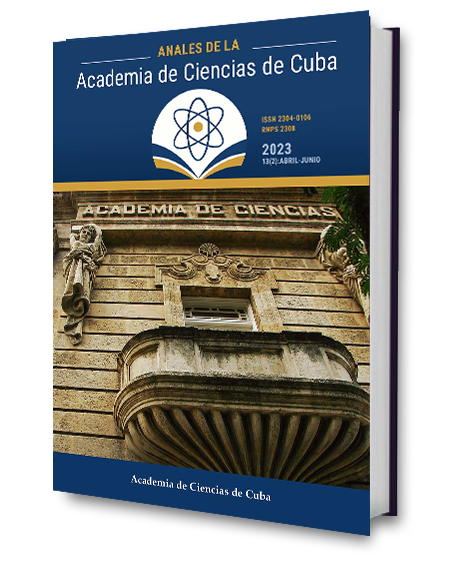Procedimiento para el monitoreo y gestión de la contaminación por metales pesados en sistemas fluviales de Cuba
Palabras clave:
Manejo, sistemas fluviales, riesgo de contaminación, metales pesadosResumen
Introducción: Los factores que permiten el manejo de sistemas fluviales en riesgo de contaminación metálica, deben estar identificados con claridad para lograr disminuir el grado de contaminación y la mitigación de sus efectos. El trabajo tuvo como objetivo desarrollar e implementar un procedimiento que permita el manejo sostenible de sistemas fluviales en riesgo de contaminación metálica, como herramienta para facilitar la toma de decisiones a nivel territorial.
Métodos: Mediante el método de consulta a expertos, se establecieron las dimensiones, categorías e indicadores que integran el modelo conceptual y el procedimiento de monitoreo y gestión de sistemas fluviales en riesgo de contaminación metálica. Durante la implementación en el sistema fluvial Pedroso-Mampostón, se utilizaron técnicas de Espectrometría de masas por plasma inducido y acoplado y fluorescencia de rayos X, oxidación catalítica, cromatografía en fase gaseosa, potenciometría y difracción de rayos X. Se utilizaron entrevistas semiestructuradas y trabajo grupal para obtener información y comunicar resultados.
Resultados: El modelo conceptual consta de 2 subsistemas que permiten, mediante la evaluación de 6 indicadores abióticos y 8 bióticos, caracterizar la contaminación y categorizar los ecosistemas. El procedimiento que guía la implementación del modelo se definió en 4 etapas y se aplicó en el sistema fluvial Pedroso-Mampostón, lo que permitió categorizar sus unidades hidrológicas: presa Mampostón-Categoría I; ríos Ganuza y Mampostón y derivadora Pedroso; categoría IV. La contaminación se caracteriza como diseminada-restringida, frecuente y muy peligrosa. Existen evidencias de toxicidad en peces (CPEt moderado-alto: concentraciones de Cd no recomendables para el consumo en el 37,5 % el 44,0 %; contenido de Pb elevado en el 14 % al 20 %) y plantas (PDF en macrófitas: 16 % al 32 % Cd y Pb). En el hombre, existe peligro crónico para un consumo de 81 gr/día-1 y riesgo carcinogénico (real-restringido).
Conclusiones: el procedimiento aplicado puede ser generalizable a otros ecosistemas en riesgo.
Descargas
Publicado
Cómo citar
Número
Sección
Licencia
La revista Anales de la Academia de Ciencias de Cuba protege los derechos de autor, y opera con una Licencia Creative Commons 4.0 (Licencia Creative Commons Reconocimiento-NoComerciall 4.0). Al publicar en ella los autores permiten copiar, reproducir, distribuir, comunicar públicamente su obra y generar obras derivadas, siempre y cuando se cite y reconozca al autor original. No permiten, sin embargo, utilizar la obra original con fines comerciales ni lucrativos.
Los autores autorizan la publicación de sus escritos conservando los derechos de autoría, y cediendo y transfiriendo a la revista todos los derechos protegidos por las leyes de propiedad intelectual que rigen en Cuba, que implican la edición para difundir la obra.
Los autores podrán establecer acuerdos adicionales para la distribución no exclusiva de la versión de la obra publicada en la revista (por ejemplo, situarla en un repositorio institucional o publicarla en un libro), con el reconocimiento de haber sido publicada primero en esta revista.
Para conocer más, véase https://creativecommons.org






